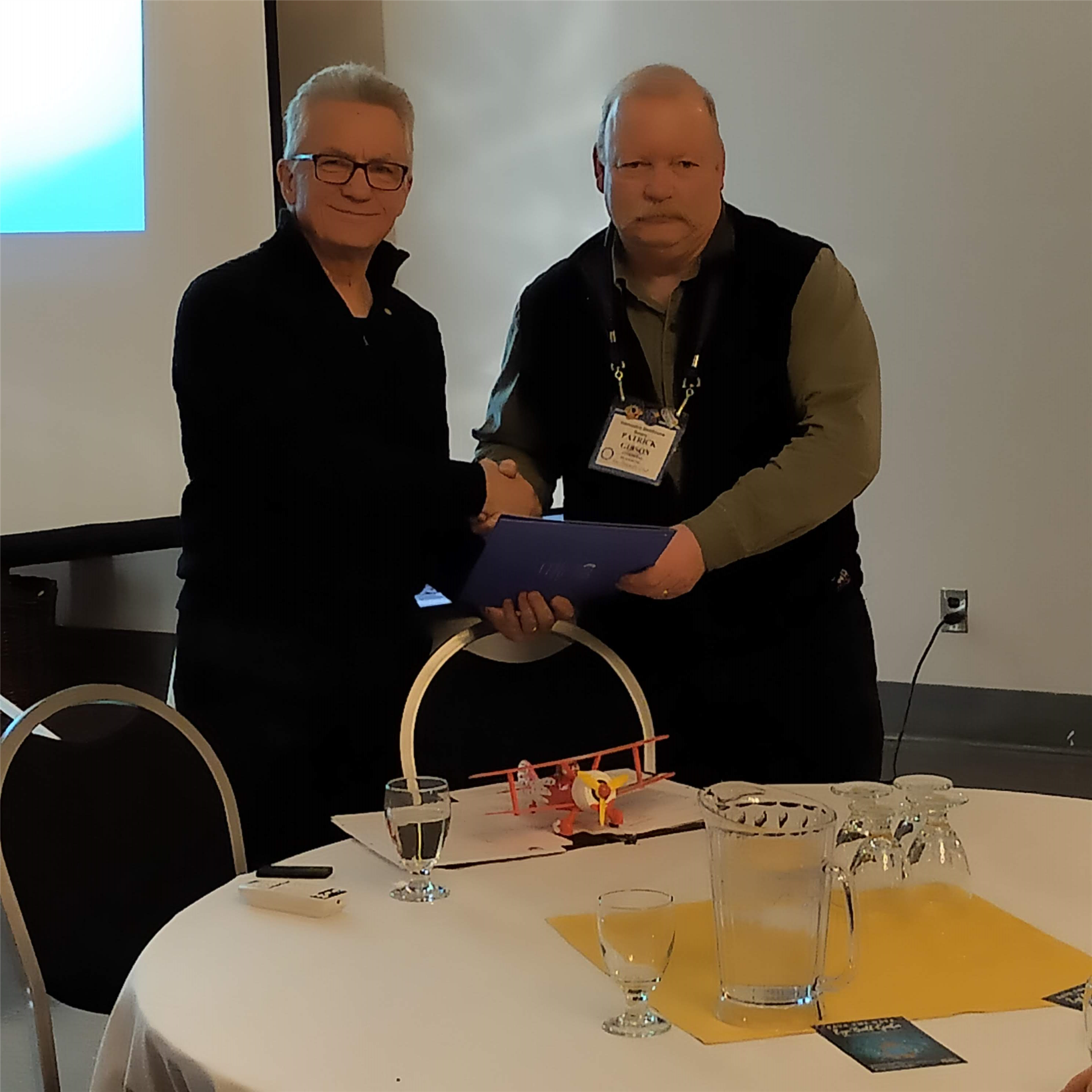This Tuesday we heard a very interesting talk from Charles Teeuwson, a member of the Sherwood Park Rotary club, about his love of competition aerobatics. He has been flying airplanes since 1982 and started flying aerobatics in 1983. He currently has a Class 2 Aerobic Instructor rating and also does judging for various aerobatic contests. He is a member of the Aerobatic Club of Alberta, which has between fifteen and twenty flying members.
The local members fly out of the Villeneuve airport. They host two competitions a year, one in Killam and another in Rocky Mountain House. They also attend and compete in one US competition, held in Cutbank, Montana each year. The airplanes used are small one or two seaters, with powerful engines and other modifications allowing them to perform the various aerobatic manoeuvres, such as flying upside down, without stalling.
Competition aerobatics has a large number of possible manoeuvres that are organised into families of similar moves. Each manoeuvre also has an associated symbol that represents it on paper. The sequences of manoeuvres can then be represented as a kind of map on paper that the pilot can place in front of them to help them remember the sequence when they are flying. They also have a restricted airspace that each sequence must be flown within, with a maximum one cubic kilometer box. There are five levels of difficulty to the sequences, called power categories, that are flown in competition, with the highest level of difficulty having the largest box. Judging has a strict set of rules, a point value for each manoeuvre, and with points deducted for errors. The judges have an assistant who calls out the manoeuvre just before it takes place so the judges can keep their eyes on the competitor.
Charles brought along a small model airplane and used it to demonstrate two of the sequences that are flown in competition. The sequences of rolls, loops, backward slides, turns, vertical flying and spins made most of us a little dizzy just watching the model. We could all see that this is a sport that takes a special type of person, and also how it could be a very interesting and challenging life long addiction. We would like to thank Charles for his very interesting and entertaining talk.
